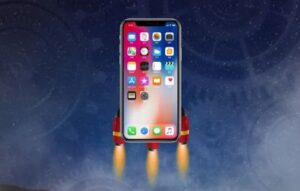Female protagonists in contemporary animation
In contemporary animation, female protagonists have gained prominence, demonstrating courage and independence. These characters inspire by breaking stereotypes and promoting realistic representation.
It highlights a growing diversity that allows girls and boys to see role models of leadership and courage in strong female characters who decide their own destiny and face challenges with resilience.
Characteristics of strong female characters
Strong female characters often exhibit courage and self-determinationFacing obstacles without depending on others. They are models of independent and confident leadership.
Another key feature is the empathywhich allows them to strengthen ties and demonstrate that strength also lies in supporting and collaborating with their environment.
Likewise, these characters break traditional stereotypes by presenting cultural and social diversityand reflect the multiple realities of girls and young women in society.
Notable examples: Moana and Mirabel
Moana represents a young woman determined to save her people, guided by her own instincts and courage. Her story highlights the autonomy and leadership without the need for a male figure.
Mirabel, in Encanto, has no special powers, and yet she becomes a heroine because of her resilience and empathyHe strengthens his family by demonstrating that heroism is also human and relatable.
Both characters inspire by showing that feminine strength manifests in diverse forms, from adventurous courage to the ability to connect with and heal their community.
Representativeness and diversity in animated characters
Contemporary animation stands out for its commitment to representativeness and inclusion, showcasing female characters that reflect diverse cultural and social realities.
These characters promote a message of unity and respect towards diversity, strengthening empathy and understanding in children and young people.
Series that promote diversity and unity
Series like She-Ra and the Princesses of Power They highlight the importance of diversity, showcasing female characters from different cultures and abilities who work together.
Miraculous: Ladybug It combines adventure with everyday situations, conveying values such as courage and respect for differences.
These proposals promote an inclusive vision, where diversity is celebrated and cooperation is key to facing challenges.
Characters that promote learning and independence
Dora the Explorer It is a pioneering example that promotes active learning and independence, showing a Latina girl who leads and explores her environment with curiosity.
These characters motivate girls to develop skills, make their own decisions, and feel confident in their abilities.
In doing so, they teach that knowledge and autonomy are essential tools for personal and social growth.
Cultural and social inclusion in animation
The representation of diverse cultures and social environments in animation allows more girls to identify with the protagonists and feel valued.
Characters like Judy Hopps, Mérida and Elena of Avalor They reflect different realities and challenges, bringing the public closer to a broader and more respectful vision.
Importance of cultural inclusion
Including different cultures and traditions in female characters encourages acceptance and respect, crucial aspects for a fairer and more empathetic society.
Impact of female protagonists on society
Female protagonists in animation have transformed how society perceives leadership and overcoming adversity. They are role models who challenge traditional gender roles.
By showcasing determined and resilient women, these characters inspire both girls and boys to imagine a future where equality and courage are essential values.
Models of leadership and self-improvement
These characters act as leadership modelsdemonstrating that decision-making and courage can exist without relying on others. Her autonomy is a clear example.
They also reflect the ability to overcome difficulties, showing that resilience is fundamental to achieving goals, which helps to strengthen confidence in new generations.
The animation features women who lead with empathy and determination, aspects that teach how to combine strength and sensitivity to face social and personal challenges.
Influence on children's imagination and aspirations
The protagonists encourage a diverse imagination in girls and boys, expanding their aspirations towards roles previously not considered typical for women.
By identifying with these characters, children learn to value equality and dream of a future where women can be leaders, heroines, and agents of change.
In this way, animation helps to break down stereotypes and consolidate a more inclusive and motivating imaginary for all children.
Additional female characters and their contribution
Examples of heroines who defy stereotypes
Characters like Judy Hopps, Merida, and Carmen Sandiego break with traditional archetypes, showing strength, intelligence, and courage in varied contexts.
Judy Hopps, the police officer in Zootopia, overcomes prejudice and demonstrates that with perseverance any goal can be achieved, even in worlds dominated by stereotypes.
Mérida, from Valiente, defies family and social expectations, defending her right to decide her destiny with courage and determination.
Carmen Sandiego is an example of an intelligent heroine who uses her skills to fight injustice, subverting typical roles with cunning and charisma.
Contribution to an inclusive vision
These heroines broaden children's imagination, promoting inclusion and acceptance of diverse ways of being and leading, enriching the perception of childhood.
Her presence in animation helps break down stigmas and promotes female leadership models that represent different cultures, personalities, and forms of courage.
Thus, they contribute to building a narrative where each girl can recognize herself as capable and powerful, strengthening diversity in the role models of animation.






